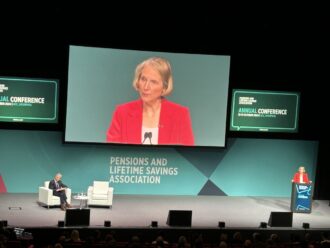The recent visit by chancellor of the exchequer Rachel Reeves to the big pension schemes in Canada on the back of her plans to implement a ‘canadian-style’ pension model in the UK to drive greater investment in equities and infrastructure has stirred more debate on what is already febrile ground.
The Local Pensions Partnership Investments (LPPI), one of eight Local Government Pension Scheme (LGPS) investment pools, has entered the fray with the fair assertion that the government must make it easier for the LGPS to invest in the UK to realise its full potential.
This is within the context of the chancellor also signalling that her recently launched pensions review will focus on ‘unlocking the full might of the LGPS’ through greater consolidation.
But the LPPI believes any reforms will only be successful if the systemic barriers to investment holding LGPS back are also addressed.
Putting this case, Richard Tomlinson, chief investment officer at LPPI said: “The government needs to attract capital to the UK then facilitate its deployment. Investing in assets that will have the biggest impact on economic growth in the UK, such as infrastructure, real estate and growth capital, is often viewed as too risky for many pension funds, whose primary fiduciary responsibility is to generate sustainable risk-adjusted returns for their members.”
Tomlinson then added: “We need a step-change in the pensions and investment policy environment to make investing in the UK more attractive. The government should continue on its path to planning reform, introduce formal incentives for investors in the UK, such as tax credits, and prioritise creating more domestic private market opportunities that deliver the long-term, stable returns many pension funds look for.”
Tomlinson noted that doing this will support economic growth, see more pension fund capital deployed into the renewable energy projects needed to support the UK’s clean energy transition, and make the government’s push for greater consolidation of LGPS funds far more impactful.
“Crucially, by focusing on ‘supply’ of attractive opportunities the LGPS can be relied upon without compromising its long-term affordability for employers,” he added.
Unlock billions
For all of that, the chancellor’s flirtation with the Canadian pensions system is not misplaced – if the correct lessons are learnt – suggested LPPI.
Analysis from LPPI revealed that the UK could unlock billions in extra investment for the UK if the LGPS adopted the appropriate lessons from Canada’s Maple 8 – the model the chancellor is keen on using for public pension fund consolidation.
The Maple 8 system, a term referring to Canada’s eight largest public pension funds, was introduced in the late 1980s and has since built up a capital investment pool worth $1.46trn of Canadian pensions – equivalent to 100% of the country’s GDP.
LPPI’s analysis shows £16bn worth of capital for infrastructure investment could be unlocked if all the funds in the UK LGPS raised their allocation in the asset class from its current average of 6% to 11% – the same weighted average as the funds in the Maple 8 system.
LPPI alone is currently 14% invested in infrastructure.
LPPI also points to four key characteristics that make the Canadian model more effective than that of the UK.
One is more independent governance – unlike the need in the UK for Parliamentary approval on rule changes.
Two, is a greater allocation to private markets – currently 48% in Canada and 41% for LPPI versus LGPS (ex-LPPI) average of just 20%.
Three, is more effective internal management – that is, by bringing a material proportion of investment management in-house this can deliver increased alignment and potential reduced costs.
And four, a greater focus on long-term value creation by aligning investment decision making with the liability profile and investment goals of stakeholders.
On this, Tomlinson said: “The chancellor was right to showcase Canada’s Maple 8 funds as a model of success. Public pensions investment in the UK is several years behind some of the best practice examples we’ve seen in places like Canada and Australia.”
And he added: “We believe that presents a massive opportunity for the UK to take the best learnings from these regions and potentially avoid some of the mistakes and generate significant extra investment capital for the UK.
“In addition to being able to invest in more opportunities, consolidation and contemporary governance with effective delegation could add more scale, reduce costs, remove avoidable layers of decision-making and administration, and allow investment managers to be more agile.”
Tomlinson noted LPPI began with a “Canada-like” scheme management model in 2016 and now even “outpace” the Maple 8 now in terms of investment performance.





Comments